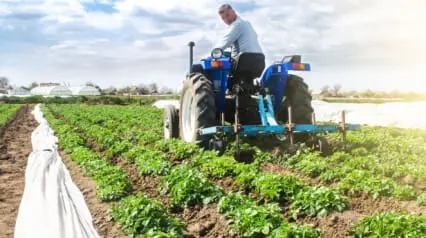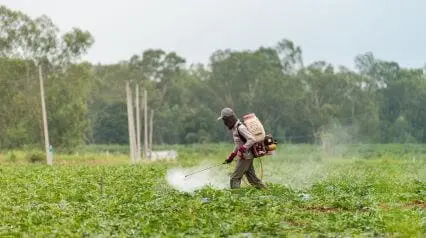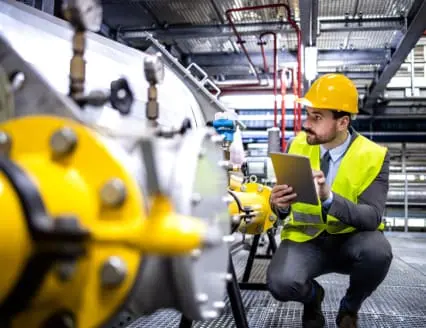What is Farm Safety?
Farm safety pertains to the proactive measures implemented to reduce physical dangers and other risks in an agricultural setting, such as property damage and financial setbacks. It encompasses processes aimed to safeguard the well-being of farm workers, uphold animal and plant health, maintain equipment, and protect the ecosystem to which they belong.
Significance
The ultimate goal of agricultural safety is to establish a secure work environment where all parties involved in the operations are safe and feel confident and secure in performing their tasks. Farmers deal with a variety of risks every day—from using heavy machinery to handling chemicals—and by setting up systems that ensure farm safety to prevent accidents and injuries, they can ensure the integrity of the food supply chain, providing everyone with food and resources.
Common Safety Hazards and Risks
Farming environments encompass a diverse range of hazards and risks. These result in dire consequences if left unchecked, the worst of which is the physical well-being of farm laborers and the communities they support. Here are the most critical farm hazards to look out for:
- Equipment Issues – Modern agriculture is vastly dependent on heavy machinery as this increases the efficiency of many farming procedures. Unfortunately, tractors, cultivators, and power tools pose grave danger, evidenced by the numbers reported by the U.S. Bureau of Labor Statistics where 146 individuals were fatally injured while working with or near tractors in 2018 alone.
- Chemical Hazards – Pesticides and fertilizers enhance crop yield, while fuels and solvents are must-haves in machine operations and maintenance. These agrochemicals are highly toxic to people and have a high possibility of causing environmental contamination.
- Threats from Livestock – Working with animals (e.g., lifting or pushing) cause injuries. And with their unpredictable behavior, there is also the potential for bites, kicks, and even trampling. On top of that, some livestock may transmit certain diseases like Rabies, Bovine Tuberculosis, Campylobacteriosis, Ringworm, and Influenza to humans.
- Environmental Factors – Extreme weather conditions, attributed to climate change, threaten farms and the people working it. Droughts result in poor harvest and livestock health. Typhoons damage or drown crops and cause poor visibility and slippery work surfaces. Extreme heat is a catalyst for deadly fires. Aside from disrupting the food chain, farms go completely out of business because of this risk.
Implementing Effective Farm Safety Practices
With numerous factors to consider, planning for and adopting a comprehensive approach to agricultural safety is an ambitious and expensive undertaking. However, it’s possible to start with just a few, simple farm safety tips that deliver immediate and satisfactory results in mitigating the aforementioned risks.
Use Personal Protective Equipment
The most practical way to shield workers from the numerous physical hazards in a farm and its surrounding environs is to wear Personal Protective Equipment (PPE). The most common items in this setting are long-sleeved shirts, long pants, and gloves. Respirators are best used while spraying fertilizers. Steel-toed boots and earplugs are must-haves while operating heavy machinery.
Best Practices:
- Provide the appropriate type depending on the task assigned.
- Ensure the correct usage.
- Regularly replace and maintain PPE.
Create Your Own PPE Inspection Template
Eliminate manual tasks and streamline your operations.
Get started for FREEPursue Continuous Training and Education
A key component of farm safety is ensuring that all personnel receive thorough training and education, as these empower them to identify risks, understand safety procedures, and effectively respond to incidents or near misses. Based on the hazards noted above, training should cover:
- Exhaustive farm equipment safety instruction, from operation to regular maintenance and repairs.
- Agrochemicals and their properties, safe use, storage, and disposal of chemicals, and emergency response like first aid procedures
- Animal temperament and behavior shifts, health history, safe handling, appropriate yard design, and possible animal-to-human disease transmission.
- Agricultural and supply chain sustainability
Best Practices:
- Research the latest safety guidelines or updated best practices regarding farm safety practices and share them with the rest of the team.
- Conduct comprehensive onboarding and training sessions or refresher course for all workers.
- Carry out hands-on demonstrations that include practical scenarios.
Conduct Periodic Risk Assessments
Each farm has its own distinct set of hazards, depending on factors like topography, weather, and the crops grown or livestock looked after. By routinely assessing these risks, farm managers can identify potential hazards and develop appropriate mitigation strategies, detailed emergency response strategies, and evacuation protocols.
Best Practices:
- Schedule risk assessments at set intervals.
- Use digital tools when gathering information for quick retrieval and review, if the need arises.
- Involve the whole team to improve productivity.
Foster a Culture of Safety in Operations
Complacency is the worst adversary in the agricultural sector. Since there are just too many physical hazards that could have tremendous negative impacts on farms, workers should be committed to prioritizing safety at all times.
Best Practices:
- Farm owners and managers should lead by example.
- Encourage all members of the team to voice their concerns and recommendations during discussions and decision-making.
- Recognize and reward safe practices.
Building a Safe Farm Environment for All Seasons
Ensuring farm safety is more challenging than safeguarding an enclosed office space. Aside from the vast area to look after, other factors are difficult to anticipate, much less manage. But this is not impossible. Here are some ways to accomplish this.
- Address seasonal safety concerns – Carefully plan the workflows during planting and harvesting season to proactively address risks like equipment malfunction, silo ruptures or explosions, and overhead power lines. Workers are also fatigued with the heavy load and long workday at these times, so managers should prepare a schedule that slots in enough rest and hydration.
- Construct ergonomic workspaces – Farming is a tiring job. Aches and pains in the back, shoulders, arms, and hands are common complaints. Over time, these problems may result in injuries, lost work time, and reduced productivity. Simple ergonomic solutions like storing tools in cabinets below shoulder height, keeping crop weights under 50 pounds, and equipping tractors with suspension seats and lumbar support lessen the toll farm work has on the body.
- Prepare for adverse weather conditions and natural disasters – Tornadoes, hurricanes, flash floods, and extreme cold are unavoidable. The only way to ensure safety is to prepare for them. Establishing an inventory system, identifying exit routes per building in the property, and planning salvage operations can help farm managers handle these situations.
Standards and Regulations
Laws and policies establish a framework that upholds safe practices and procedures. By guaranteeing worker safety, equipment upkeep, and ethical workflows, farmers can contribute to a stable and sustainable industry. Listed below are the key regulatory agencies in various countries:
United States
- OSHA (Occupational Safety and Health Administration) sets and enforces safety and health standards for agricultural operations. This office is in charge of inspections and safety training.
- USDA (United States Department of Agriculture) administers the Fair Labor Standards Act that safeguards farm laborers and ascertains safe agricultural practices. They also provide financial assistance to rural farms so they can construct better structures, acquire up-to-date equipment, and implement safety measures.
- NIOSH (National Institute for Occupational Safety and Health) carries out research to pinpoint risks and hazards in this industry, and then disseminate information to farm workers.
- EPA (Environmental Protection Agency) regulates the use, sale, and disposal of pesticides. They also monitor the environmental impact of agricultural practices.
United Kingdom
- HSE (Health and Safety Executive) is essentially the UK’s OSHA, enforcing safety regulations in the agricultural sector.
- DEFRA (Department for Environment, Food & Rural Affairs) oversees farming policies, environmental protection, and rural affairs.
Australia
- Safe Work Australia is the national agency responsible for workplace health and safety, collaborating with state and territory governments to enforce regulations.
- APVMA (Australian Pesticides and Veterinary Medicines Authority) regulates agricultural and veterinary chemical handling.
European Union
- EU-OSHA or the European Agency for Safety and Health at Work handles and promotes occupational health and safety across member states. Additionally, they do agricultural research and share their findings with affiliated agencies and farming businesses.
- EFSA (European Food Safety Authority) assesses hazards associated with agricultural practices and their effects on food safety.
Technology and Innovations
Embracing farming technology advances safety practices. From automated farm safety training to real-time monitoring systems, these innovations improve risk mitigation and guarantee quick response to potential risks.
- IoT devices – Interconnected technologies like sensors, drones, and cameras facilitate real-time monitoring, enabling farm managers to detect anomalies in operations.
- Built-in safety features – Safety mechanisms such as roll-over protection, automatic shut-off, and collision avoidance reduce operator errors, reducing the possibility of accidents while operating heavy machinery.
- Smart apps – Software solutions streamline numerous tasks required in farm management. By providing full visibility and allowing instant access to information, farm workers can optimize their workflows and effectively mitigate risks.
- Analytics – This facilitates proactive risk assessment. With the insights provided, owners and managers can spot critical patterns, anticipate risks, prioritize interventions, and improve their safety protocols.
FAQs about Farm Safety
Farm safety education is essential for farm owners, managers, and their workers. But because the agricultural industry impacts every single one of us, learning everything about this subject matter would also benefit environmental specialists, researchers, agricultural educators and their students, government agencies, and local communities.
Defective farming equipment, particularly the overturning of tractors and similar heavy machinery, has caused the most number of injuries and fatalities in the agricultural sector.
Fatigue, especially when aggravated by extreme heat, tends to be disregarded by farm laborers until they feel its physical effects because they are too focused on the task at hand. Workers should never forget to hydrate, take food breaks, and rest to combat this.
PPE, designed to control the uncontrollable, serve as the first line of defense against farm hazards. Managers should do a walkthrough of the field and farm structures, create a list of potential dangers, and provide the appropriate PPE to their workers.
Government agencies across the globe like the NIOSH, HSE, and EU-OSHA provide critical safety information required by farm owners and managers. Collaborating with non-government organizations like Heifer International and IFAD (International Fund for Agricultural Development) will also benefit farm workers.




